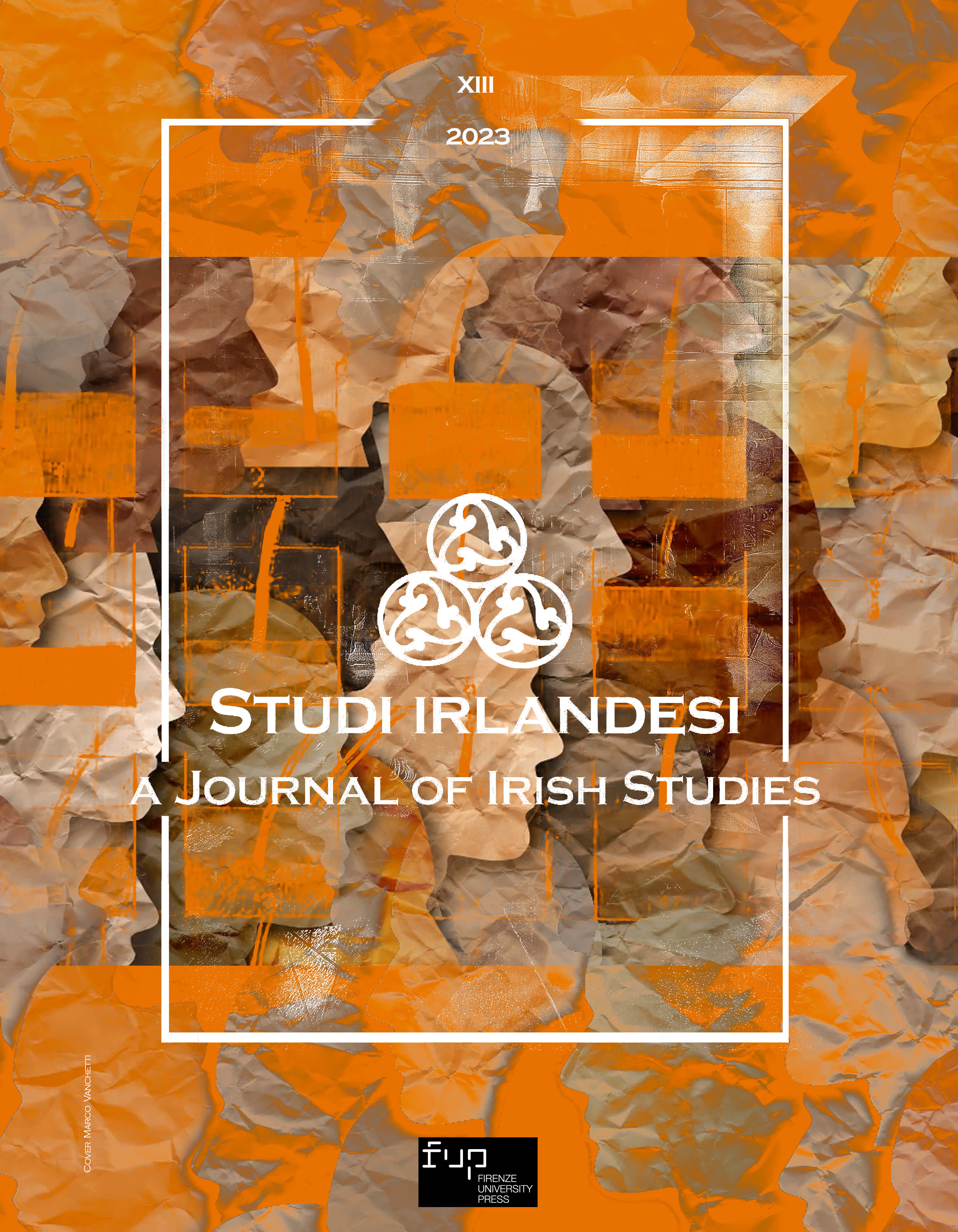Pubblicato 2023-07-31
Parole chiave
- Digital Literary Environment,
- Electronic Literature,
- Irish Literatur,
- Wreadership
Come citare
Copyright (c) 2023 Arianna Antonielli

TQuesto lavoro è fornito con la licenza Creative Commons Attribuzione 4.0 Internazionale.
Abstract
As the very idea of authorship is changed by the digital environment, so is the role of the author, their practices, their centrality inside the text undergoing a radical transformation. The analogic author sees their works operating in a traditional, typically ‘Gutenberg’ environment, whereas the digital author exploits information technology to explore what Poster calls a “networked authorship” (2002, 490). A scattered authorship (Landow 1992, 130) and a collective/cooperative notion of writing are typical features of the digital framework, and of hyperliterary works that enable a multisequential reading. The assumptions above inform the empirical investigation developed in this study. It looks at the ways digital authorship tools have contributed to deconstructing the idea of “one strong authorial voice”. In its place, these tools have introduced a “mild”, plural alternative, which is currently being circulated on the Internet. Therefore, the unity of a digital text appears to be in its destination, not its origin. This essay considers several Irish digital works as case studies. It shows how the fragmented nature of digital literary works, which resemble the hypertextual links, moves close to Barthes’s “lexias” which, with their “galaxie[s] de signifiants” (Barthes 1984, 11) establish intra- and inter-textual connections dismantling the unity of the text and implement the notion of a multiple, collective authorship.

